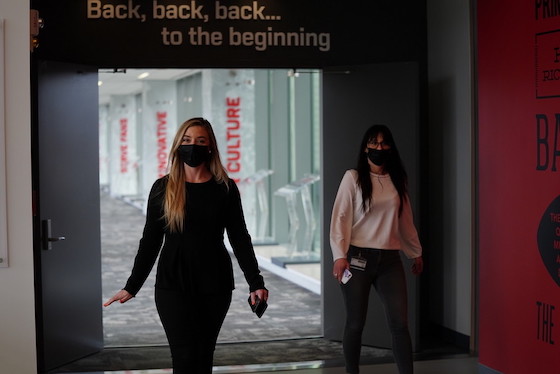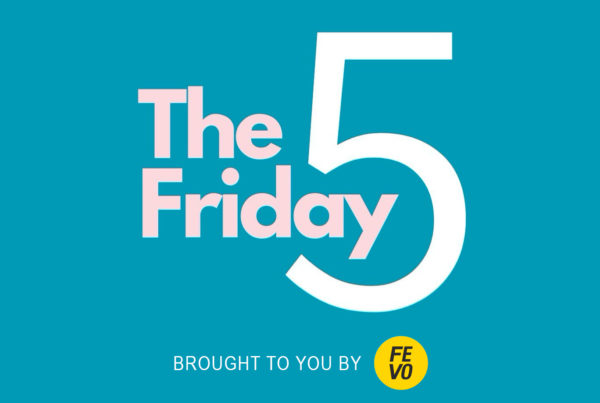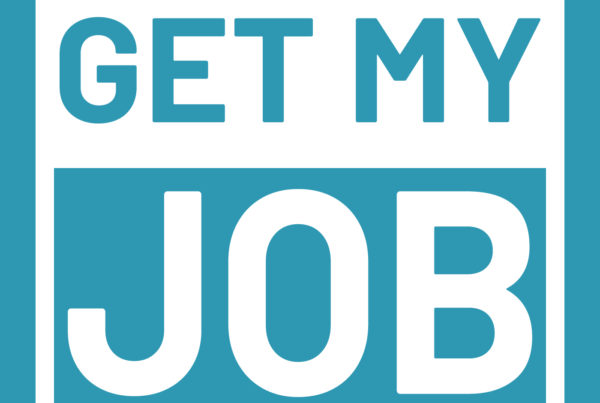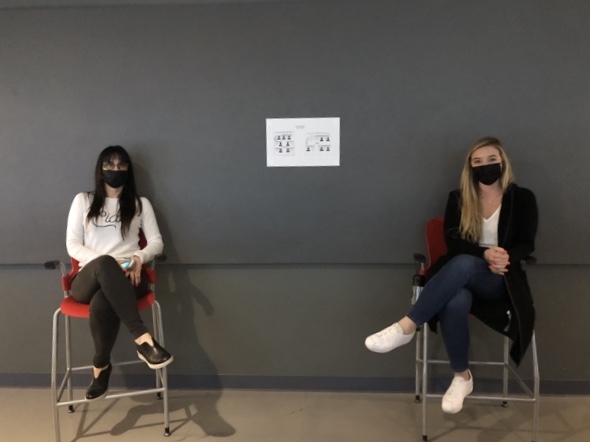
Complementary football refers to a total team effort, with all facets of the offense, defense and special teams doing their part to contribute and execute. The same could be send for a television broadcast – it takes the logistical side, the technical side and the content side to make it happen.
So when the San Francisco 49ers had to move their home from Santa Clara to Glendale, AZ, the ESPN Monday Night Football crew had to move the 130 people that go into making Monday’s broadcast between the Buffalo Bills and the 49ers happen, as well.
Enter ESPN’s NFL production managers, Jodi Brits and Jess Kraus, who talked with Fangirl Sports Network about the process and how its changed amid the coronavirus pandemic.
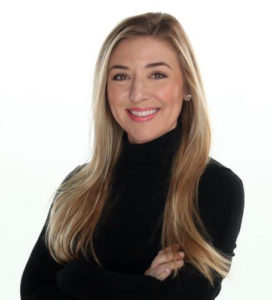
Jess Kraus

Jodi Brits
“The biggest thing that we had is Jess and I try to work ahead and we actually found out all the information via an initial tweet,” Brits said. “So we were looking ahead of the game, saw the initial tweet and the biggest factor that Jess and I have, is that we try to work together and take action right away. So it was difficult for us to stand down and wait for the initial move to happen before we actually made those quick decisions…But we were sitting there collaborating and looking at what we could discuss ahead of time in regards to logistics and moving the crew, so we could work ahead on that. And once it was official and announced, we were ahead of the game.”
Although this is the first Monday Night Football game that has been moved this season, the NFL schedule has seen a variety of schedule changes, and changes generally, which is something everyone had to be prepared for in 2020.
“I think so often we get into a routine,” Kraus said. “And so the schedule comes out and we plan Monday Night Football and every week is kind of the same. And you do a lot of planning, but you get into this repetitive, week-to-week, 16 weeklong season. But this season, we realized early on that because of all of the logistics, there was so much more planning involved, down to transportation and meals and how to get coffee and how to make sure people can get fed…And now every single thing that we do, almost every single thought that people have, every question they might ask, we needed to anticipate and plan ahead for. And so I would say that that’s the biggest difference to me, is that everything just takes so much more planning this year.”
From the event itself to coverage and everything in between, COVID-19 changed the 2020 NFL Draft, which was a crash course in being flexible and changing things up quickly.
“…[T]he Draft was really interesting,” Kraus said. “I feel like because of the unknown, it changed every single day. From the beginning of April until the actual draft happened, the plan changed somehow. Some piece of it was always moving and we really had to learn how to do a lot. I think that Jodi and I have said before, it made us grateful for a lot of people that we’ve worked with from different departments, different companies. Because a lot of the time, you go into Monday Night Football or the Draft and things just kind of happen. Everybody has their role, they know what to do, it happens. Person A is here, that job will be taken care of. But when those resources are taken away from you, you have to learn and communicate more than ever, to understand how things get done, when they need to get done and who can help you do them. So I think it really was a relearning of sorts of our job, which was very helpful for what we’re dealing with now.”
Everything that went into making this year’s NFL Draft coverage happen drove home the importance of communication on all fronts.
“It was a great learning opportunity for all of us,” Brits said. “And then Jess and I over-communicated to the staff working the raft, which helped them because they’re not involved in all those meetings that we are. And when we explain to them why or how it’s working and just hanging up different schedules and grids and details to reference, they really appreciate that. So a little goes a long way, when we try to share the knowledge with a group that’s not as involved as we are…The more communication we can give to the crew and supporting teams, they appreciate it, and building their knowledge helps build us, so I believe [it’s something that will continue post-COVID].”
Logistics is a talents and an art, but not all logistical opportunities are the same.
“I had a logistical background, but coming into production, it was a whole new role for me and was challenging and I learned a lot and constantly learn something new each year,” Brit said. “And especially with COVID, this is the most challenging, but best way to learn and grow. So I’m actually enjoying it, and having a co-worker like Jess alongside me. We work together well…So it works to our benefit and we grow together, learn together and break down together.”
Team work makes the dream work.
“…[T]he best part about working with Jodi is we’re really similar…but we complement each other well,” Kraus said. “So we learn a lot from each other every day. And I think that we can lean on each other a lot. Especially, when we have those breakdowns and it just is too hard of a day. We’re both really good at like, ‘Look, I need to step back. Can you step up?’ So that’s been really great, especially this season.”
And that brings us back to complementary football and broadcasting. When viewers turn their TVs on Monday night, they’ll see pregame features, they’ll see graphics, they’ll see the game. They won’t see everything that went in to getting all of that done, but that’s ok. That’s how it should be.
“[T]here is a technical side of it, there is a content side of it and then there is a logistical side of it,” Kraus said. “And that’s what Jodi and I are working on the most, but they all work together and we all touch a little bit of each.”
Are you ready for some football?
Header image: Photo by Joe Faraoni / ESPN Images



